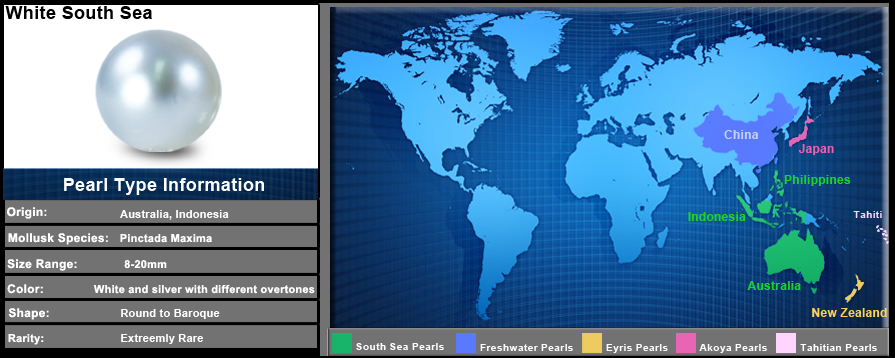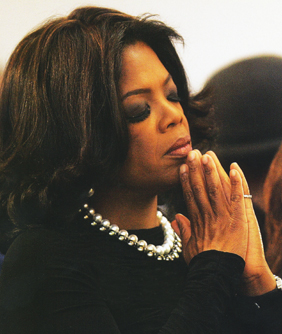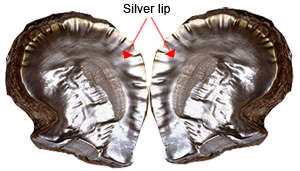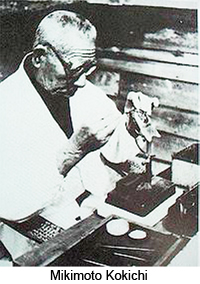
THE TRUE ESSENCE OF LUXURY AND CLASS...
White South Sea pearls are highly prized and recognized as the most valuable type of cultured pearl. The White South Sea pearl is an icon of class, luxury, and status. Women of great wealth and power often wear strands of White South Sea pearls. WSS pearls can easily be recognized by their large size and warm glow of light that radiates from within; this quality is known as the pearls "orient". The reason for their high value is due to their large size, the level of difficulty to produce, and their absolute rarity. Only a small percentage of White South Sea pearls that are harvested actually come out round so these pearls demand a premium.
ORIGIN |

|
White South Sea pearls are farmed mostly in Australia and Indonesia however Australia is the primary producer. Most of Australia’s pearls are cultivated in Broom, located in the northeast corner of the continent. While most South Sea producers are growing their own oysters in hatcheries a small percentage are still collected from the wild. Due to strict government regulations there is a sustained oyster population. Each year the government sets a limit on how many oysters may be gathered from the sea, the cultivators are not allowed to gather oysters younger than two years old. The age of the oyster can be determined by the animal’s size, a two year old oyster is in the range of 6” to 7” long.
Myanmar (formally Burma) used to produce the finest South Sea pearls in the world. But in the late 1960’s the Burmese government nationalized the pearling industry and threw out the Japanese, who were responsible for growing the pearls. Once the Japanese left, the production and quality of the pearls diminished and it has never been the same.
|
| THE OYSTERS |
White South Sea pearls come from a mollusk known as Pinctada maxima. Out of the thirty or so mollusks that are able to produce pearls this is the largest found throughout the world. Its shell can grow to a diameter of 35cm, and it can reach a weight of 5kg. It is due to the size of this mollusk that the pearls in this variety tend to range in size from 9mm-17mm or even larger. From the time the oyster is nucleated it tends to deposit a very thick nacerous coating, more so than other oysters.
These oysters are often referred to as 'Silver lipped" or "White lipped" due to the color on the inside edge of their valves. Although the color on the inner valves tends to gleam a beautiful silver or white, the pearls can demonstrate strong overtones of pink, green and blue. Producing pearls from these oysters presents quite a challenge because of how sensitive the bivalves actually are. The slightest change in water temperature or disruption of the shell can either kill them or ruin the pearl quality inside of the shell. They only truly thrive in their natural environment, which is why attempts outside of this geographic area have all failed
|
 |
| HISTORY |
|
In 1912 Mikimoto began to experiment with the Pinctada maxima, attempting to culture it in the waters of Japan. His attempts were unsuccessful. These attempts continued on the Palau Islands between 1920 and 1942 but remained un-successful. Before World War II more attempts were made both in Indonesia and the Philippines. It was not until after the war that there would be success in culturing the Pinctada maxima.
At this time the Japanese held the secret to culturing oysters and creating pearls. They’re tightly held secret was solidified into a decree instated by none other than Mikimoto himself on March 31st 1953. This decree was also referred to as the "Diamond Policy"; it was worded as follows...
| Principle No. 1: |
Japan alone will market all cultured pearls, regardless of the country in which they were produced. |
| Principle No. 2: |
Only Japanese citizens are able to posses the necessary technical knowledge for pearl culture and Japan must control all enterprises. |
| Principle No 3: |
All technology regarding nucleus implantation must only be made known to Japanese citizens. |
|
 |
With a new joint venture between Japan and what was Burma in 1954, for the first time ever pearls were about to be cultured out side of Japan. The Japanese fisheries agencies declared that contracts could be made between Japan and other countries to culture pearls abroad. Japan would supply the technicians and the know how and Burma would carry all expenses and would have to hand over one half of every harvest to Japan. The remaining half of all harvests could only be sold to Japanese buyers so that Japan would still have full control over the market. These Burmese pearls were the first ever cultured South Sea pearls. |
|
|



